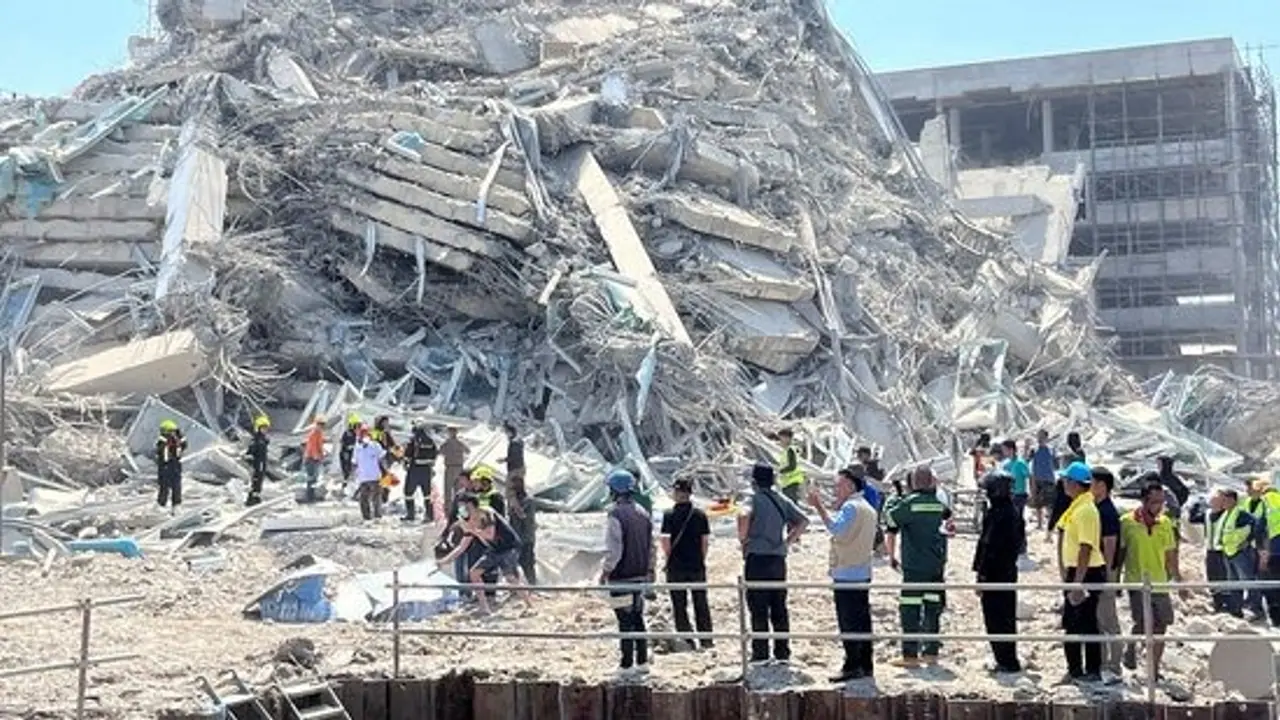A powerful 7.7-magnitude earthquake struck Myanmar, causing widespread destruction and fatalities. Scientists explain how the Sagaing Fault, tectonic plate collision, and shallow depth made it deadly, with tremors felt in Thailand and China.
On March 28, a powerful 7.7-magnitude earthquake struck central Myanmar, shaking cities across Southeast Asia and causing widespread destruction. The quake, which hit at 12:50 pm local time, was shallow—just 10 km (6.2 miles) deep—and triggered multiple aftershocks, including a 6.7-magnitude tremor just 12 minutes later.

The impact was deadly: more than 1,000 people lost their lives, and over thousand were injured, according to Myanmar's military junta. Buildings collapsed, a monastery crumbled, and in Bangkok, Thailand, a 33-story high-rise under construction collapsed, killing at least 10 people and leaving 101 missing.
Also read:Myanmar earthquake death toll passes 1,000 as rescuers dig for survivors
But why was Myanmar earthquake so powerful?
What made it so destructive across such a large region? Scientists explain the tectonic forces behind Myanmar’s seismic activity and why this region is prone to massive quakes, says a Live Science report.
1. Myanmar sits on a major fault line
Myanmar lies along the Sagaing Fault, a strike-slip fault that stretches nearly 1,600 km through the country. This is one of the most active fault lines in the world, comparable to California’s San Andreas Fault.
A strike-slip fault occurs when two massive blocks of the Earth's crust move horizontally past each other, building pressure over time until a sudden release triggers an earthquake.
According to Gregory Beroza, a geophysics professor at Stanford University, these faults can produce some of the most destructive earthquakes, especially when they strike in densely populated areas.
2. The quake was shallow, making it more dangerous
Depth matters in earthquakes. The Myanmar quake struck at just 10 km deep, which is considered very shallow.
- Shallow earthquakes cause stronger shaking at the surface, increasing the likelihood of buildings collapsing and widespread damage.
- In contrast, deeper earthquakes lose more energy before reaching the surface, making them less destructive.
"The Myanmar quake’s shallowness meant that cities like Mandalay, Bangkok, and even parts of China felt intense tremors," Beroza explained.
3. The Indian Plate is still pushing north
Myanmar’s seismic activity is fueled by a massive tectonic collision that began 40 million years ago—the ongoing collision between the Indian and Eurasian Plates.
- The Indian Plate has been moving northward for over 100 million years, but when it collided with the Eurasian Plate, it led to the formation of the Himalayas.
- This tectonic pressure continues to build up, releasing its energy in the form of massive earthquakes like the one in Myanmar.
According to Ben van der Pluijm, a geologist at the University of Michigan, this collision is a long-term process that makes Myanmar, Nepal, and northern India highly earthquake-prone, says the Live Science report.
"This earthquake was big enough that the ground probably shifted several meters horizontally," van der Pluijm said.
4. Aftershocks and the risk of more earthquakes
Large earthquakes like this often trigger aftershocks, and scientists warn that Myanmar could experience more tremors in the coming days.
- Nine smaller earthquakes, ranging from 4.4 to 4.9 in magnitude, were recorded just hours after the main quake.
- In many cases, aftershocks can last for weeks or even months, especially when a fault has been severely disrupted.
Is Myanmar at risk for another big earthquake?
Yes. Myanmar has a long history of major earthquakes, and because it sits on the Sagaing Fault, another large earthquake is inevitable—though scientists can’t predict exactly when.
- A 7.6-magnitude earthquake struck Myanmar in 2011, killing over 75 people.
- A 7.5-magnitude quake hit the region in 1946, causing extensive destruction.
"This is a very big earthquake," van der Pluijm said. "We don’t see many of these, but when we do, they reshape entire regions."
Rescue efforts in Myanmar and Thailand are ongoing, and authorities are assessing the full extent of the damage. Meanwhile, seismologists are monitoring aftershocks and studying the fault movement to better understand future earthquake risks.
For now, one thing is clear: Myanmar remains one of the most earthquake-prone regions in the world, and the forces that triggered this disaster are still at work beneath the surface.
